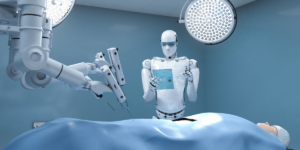The USC Viterbi School of Engineering’s Information Sciences Institute (ISI) is collaborating with the Smithsonian American Art Museum to provide more detailed and more easily accessed information about artworks in the museum’s collection online than has previously been possible.
Through this collaboration, online users will soon be able to access records of more than 40,000 artworks, which will be converted to Linked Open Data (LOD), a system that tags and publishes information online in a structured format designed to be easier to interlink – both inside and outside of the museum’s online presence.
“We are excited about developing and applying our research tools to support the museum community,” said Pedro Szekely, research assistant professor at the ISI. “The resulting tools are generic, will work with any museum’s databases and they will be made available for free to the museum community.”
Using more precise tagging information than current Web publishing formats allow, LOD lets users access, reuse, enrich and share information dynamically and eliminates many of the useless results sometimes found in other searches. The USC team has already mapped data into a standard LOD model, and is currently working to link the published data on each artwork and artist to other online resources, such as DBpedia, the LOD version of Wikipedia.

Graphic representation of how Linked Open Data connects related records (Image/Pedro Szekely, USC Information Sciences Institute
In essence, LOD is an advancement of the “Semantic Web,” a movement with the goal of creating a system in which machines understand the meaning (or “semantics”) of information on the Internet, enabling them to perform tasks automatically and locate related information on behalf of the user.
“The Smithsonian American Art Museum has embraced technology that connects our amazing collections with global audiences since 1995, when we launched one of the first museum websites,” said Elizabeth Broun, the Margaret and Terry Stent Director at the museum. “Through this partnership with the Information Sciences Institute, the museum continues to be a leader within the global museum community in using emerging technologies.
“ISI’s expertise provides us with the tools that will allow researchers and casual visitors alike to make new connections across the story of America’s visual culture,” she added.
As more information becomes available in LOD, it will provide much broader access than has been possible thus far, facilitating a more collaborative process. Many museums have their own websites, but users currently have to visit each individual site to find out what each collection contains. As cultural institutions convert to LOD, users will be able to search seamlessly across the content of stand-alone websites.
For example, if someone were looking to access information about the works of artist Jackson Pollock, he or she could easily search and obtain relevant results automatically assembled using the LOD from every museum that owns Pollock artwork.
“We hope several art museums will join in the effort and work with us,” said Eleanor Fink, art and technology consultant for the project and former director of the Getty Information Institute.
Fink said the project currently under way will serve as a model that can provide LOD conversion guidelines and tools for other museums and art organizations.
Published on December 6th, 2012
Last updated on August 5th, 2021













